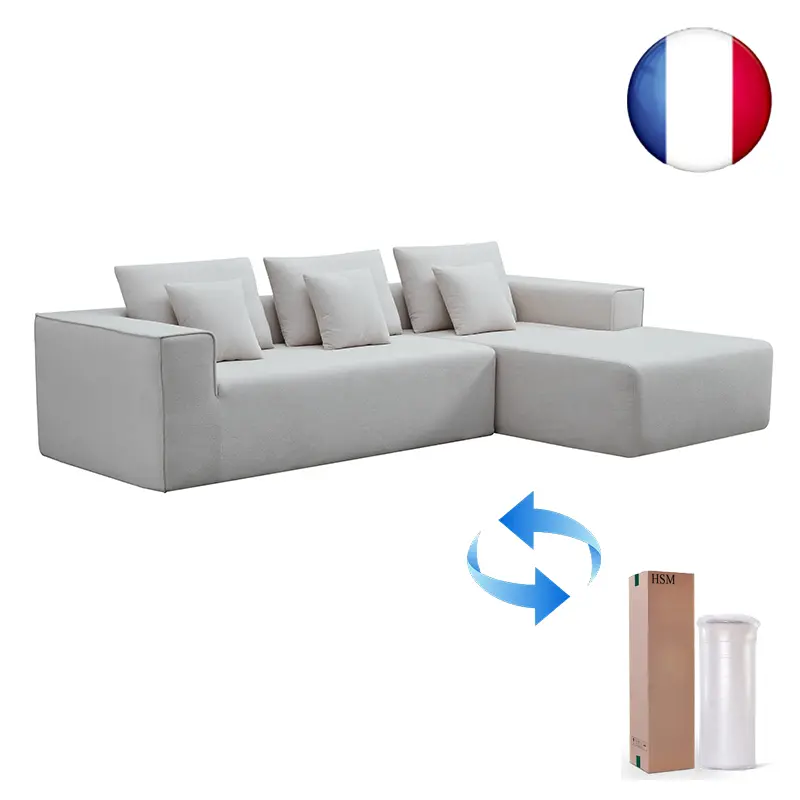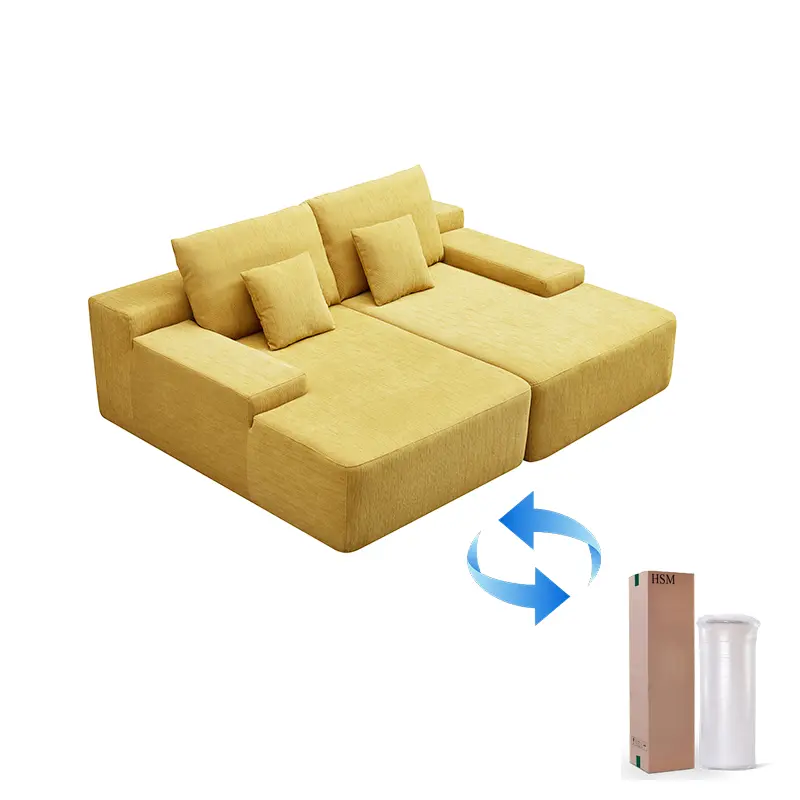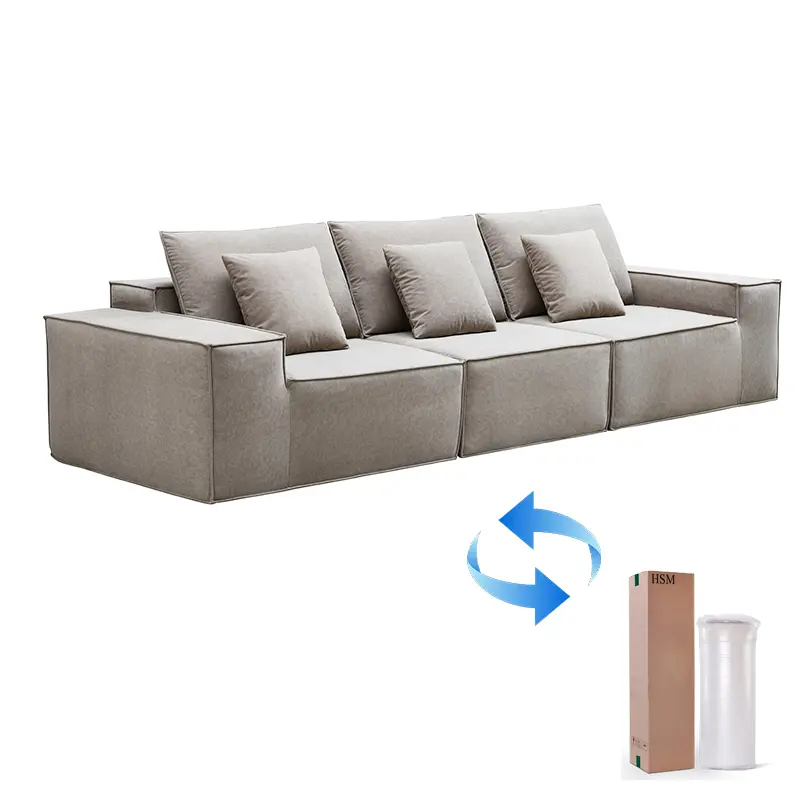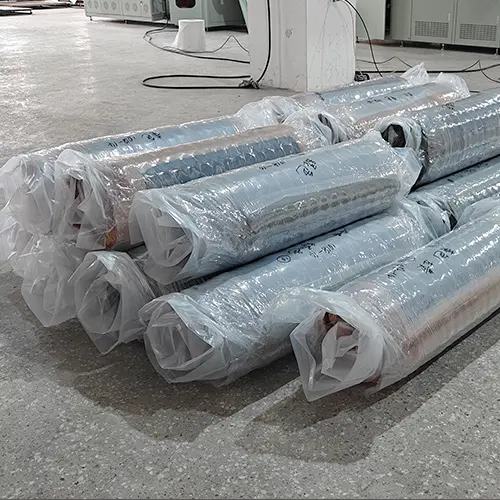What Makes a Good Sofa for Back Pain?
Back pain is a common issue that affects millions of people worldwide. While many factors contribute to back discomfort, one of the most overlooked causes is poor seating posture. A poorly designed Sofa Can exacerbate back pain, while the right one can provide relief and support. So, what makes a good sofa for back pain?
A good sofa for back pain prioritizes ergonomic support, material quality, and adaptability to individual needs. Choosing a sofa with the right support and design can significantly improve spinal health and overall comfort.
To help you find the perfect sofa, let’s explore the key factors that make a sofa ideal for those suffering from back pain.
How Does a Sofa Affect Your Back Pain?
Many people don’t realize how much time they spend sitting on their sofas. If a sofa lacks proper support, it can lead to poor posture, increased pressure on the spine, and muscle strain. Over time, this can contribute to chronic back pain and discomfort.
A well-designed sofa, on the other hand, encourages proper spinal alignment, reduces pressure points, and helps maintain a comfortable and healthy sitting position.
What Should You Look for in a Back-Supporting Sofa?
1. Lumbar Support and Firm Cushioning
A good Sofa Should havebuilt-in lumbar support or an adjustable backrest to help maintain the natural curve of the spine. Sofas with firm cushioning, especially made of high-density foam or memory foam, prevent sagging and evenly distribute weight, reducing lower back strain.
2. Medium-Firm Upholstery Materials
While soft sofas may feel comfortable at first, they often lack the necessary support for the lower back. A medium-firm sofa provides the perfect balance between comfort and stability. Look for sofas with high-resilience foam, pocketed springs, or hybrid materials that mimic orthopedic mattress designs.
3. Proper Seat Depth and Height
Seat depth and height play crucial roles in maintaining good posture while sitting.
-
Seat height: Ideally, a sofa should allow your feet to rest flat on the floor, with knees at a 90-degree angle. The optimal seat height is around 18 to 20 inches.
-
Seat depth: A good seat depth for back pain sufferers is between 20 to 24 inches. Too deep, and you may slouch; too shallow, and you might feel unsupported.
4. Adjustable Features for Custom Support
Sofas with reclining options, adjustable headrests, and modular components allow you to find the perfect position for your back. A reclining feature helps distribute body weight evenly, while an adjustable headrest can reduce neck and upper back strain.
5. Breathable and Hypoallergenic Fabrics
The type of fabric used in a sofa can also impact comfort levels. Breathable materials like linen, cotton, or microfiber can help regulate body temperature, preventing discomfort from overheating. Additionally, hypoallergenic fabrics reduce irritation for individuals with inflammation-related back issues.
Best Types of Sofas for Back Pain
1. Recliner Sofas
Recliner sofas allow users to adjust their seating position, reducing pressure on the lower spine. Some recliners come with built-in lumbar support and zero-gravity positioning, which can be highly beneficial for those with chronic back pain.
2. Ergonomic Sofas
Designed specifically for spinal health, ergonomic sofas feature firm support, structured backrests, and contoured seat cushions. These sofas help maintain a natural posture while sitting, preventing excessive slouching.
3. Modular Sofas with Customizable Sections
A modular sofa allows you to adjust different sections to achieve the best possible support. This is particularly useful for those who need personalized lumbar support or specific seat depths.
4. Sofas with High Backrests
A high-back sofa provides better upper back and neck support, which is essential for maintaining a healthy posture. This design helps reduce strain on the shoulders and spine.
Additional Tips to Reduce Back Pain While Sitting
Even with the best sofa, improper sitting habits can still contribute to back pain. Here are some tips to improve your posture and comfort:
-
Use a lumbar pillow for extra back support.
-
Avoid slouching or crossing your legs for extended periods.
-
Change positions frequently to reduce stiffness.
-
Consider an ottoman or footrest to elevate your legs and reduce lower back strain.
-
Stand up and stretch every 30–60 minutes to keep your muscles active.
Conclusion
The right sofa can make a world of difference for individuals dealing with back pain. By focusing on lumbar support, firm cushioning, proper seat depth and height, and adjustable features, you can find a sofa that enhances both comfort and spinal health. Whether you choose a recliner, ergonomic, modular, or high-back sofa, investing in a supportive seating option will ensure long-term relief and well-being.
Ready to find the perfect sofa for your back? Explore our collection of ergonomic and supportive sofas today!













